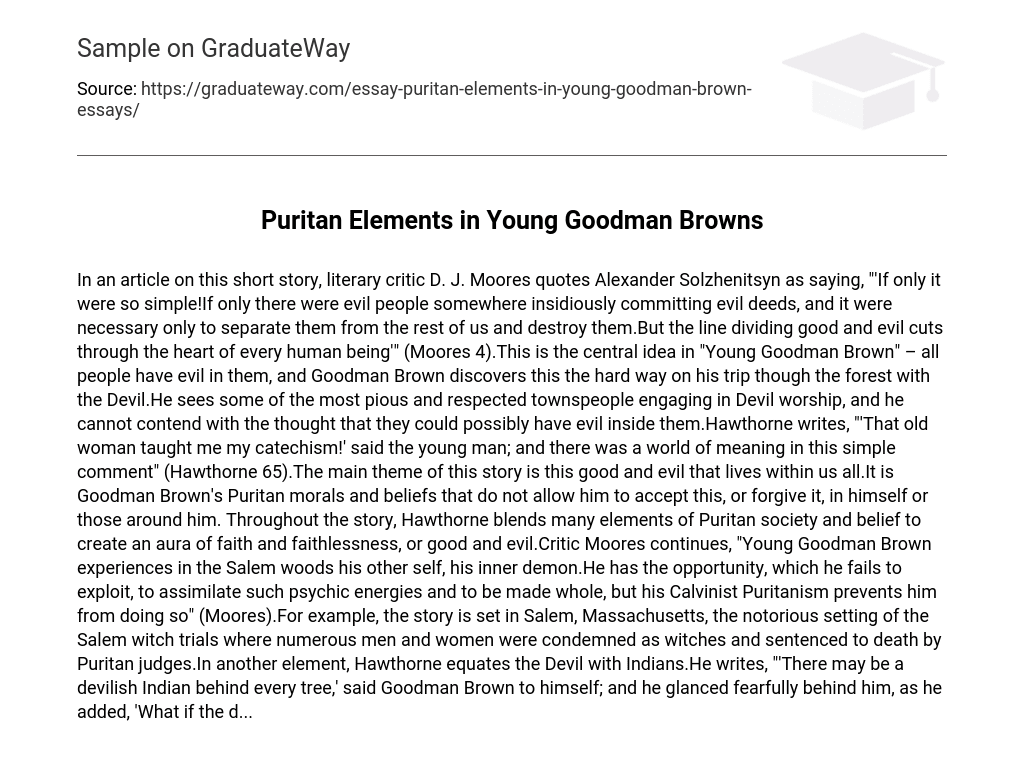Literary critic D. J. discusses this short story in an article.
Moores quotes Alexander Solzhenitsyn’s statement, “‘If only it were so simple! If only there were evil people somewhere insidiously committing evil deeds, and it were necessary only to separate them from the rest of us and destroy them. But the line dividing good and evil cuts through the heart of every human being’” (Moores 4). This is the central idea in “Young Goodman Brown” – everyone possesses evil within them. Goodman Brown learns this harsh truth while journeying through the forest with the Devil. He witnesses supposedly pious and respected townspeople engaging in Devil worship. He struggles to accept the notion that such individuals could harbor evil within them. Hawthorne writes, “‘That old woman taught me my catechism!’ said the young man; and there was a world of meaning in this simple comment” (Hawthorne 65). The story’s main theme is the presence of both good and evil within each individual. Goodman Brown’s strict Puritan morals and beliefs prevent him from acknowledging or forgiving this inherent duality in himself and others.Hawthorne skillfully incorporates various aspects of Puritan society and belief to convey a duality of faith and doubt, or goodness and wickedness, throughout the narrative. Moores, a critic, suggests that in the Salem woods, Young Goodman Brown encounters his inner demon, yet fails to embrace the opportunity to integrate these psychological energies and achieve wholeness, owing to his Calvinist Puritanism (Moores).
Moreover, the story unfolds in Salem, Massachusetts, famously known for the Salem witch trials in which countless individuals, accused of practicing witchcraft, were tried by Puritan judges and ultimately sentenced to death. Another component employed by Hawthorne involves associating the Devil with Native Americans. In the text, Goodman Brown contemplates the presence of devilish Indians lurking behind each tree, revealing his apprehension as he ponders the implications of this potential encounter.





